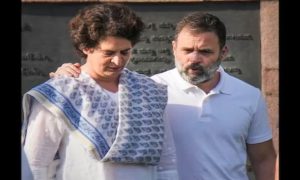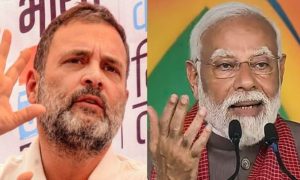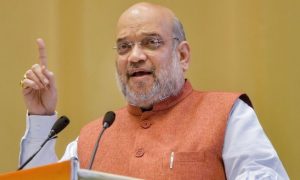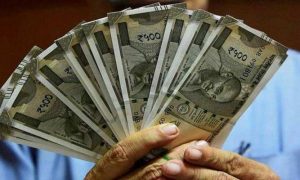Modelled after the House of Lords in the United Kingdom, the Rajya Sabha or the Upper House of Parliament has 245 members, including 233 elected members and 12 nominated
Amid resort politics, fear of poaching and hectic parleys, the stage is all set for the June 10 Rajya Sabha elections in four states. Elections for 57 Rajya Sabha seats across 15 states are slated to be held on Friday and the results will be announced the same day. While 41 candidates have already been declared elected unopposed, the nail-biter will be on for 16 seats in four states — Maharashtra, Rajasthan, Haryana and Karnataka.
News18 breaks down the process of elections to the Upper House, how Covid-19 may impact proceedings and whether the results set the tone for the 2024 polls:
FIRST THINGS FIRST, WHAT IS THE RAJYA SABHA?
Modelled after the House of Lords in the United Kingdom, the Rajya Sabha or the Upper House of Parliament has 245 members, including 233 elected members and 12 nominated. As per the constitutional limit, the Upper House strength cannot exceed 250.
The Vice-President is the chairperson of the Rajya Sabha, which is the final stop before a bill is sent for presidential assent. The allocation of seats for Rajya Sabha is made on the basis of the population of each state.
WHAT’S THE BIG DEAL ABOUT JUNE 10 POLLS?
Every Rajya Sabha seat is added support for both the ruling party and the Opposition since every bill, except Money Bills, needs the assent of the second chamber to become a law. While no party has been able to reach the half-way mark ever, the NDA government has so far managed to get crucial bills such as farm laws, the Jammu and Kashmir Reorganization Act, or the Citizenship Amendment Act passed with the support of parties such as AIADMK, Biju Janata Dal, and YSR Congress.
The Rajya Sabha polls are also likely to impact the results of the presidential elections to be held in July.
ARE THESE ELECTIONS HELD FREQUENTLY?
Known as the permanent House, Rajya Sabha cannot be dissolved. To ensure continuity, one-third of its members retire after every second year, under Article 83(1) of the Constitution, and “biennial elections” are held to fill these vacancies. The term of a member is six years.
SO, CAN I VOTE?
Nope. Rajya Sabha MPs are elected by MLAs through an indirect election. Article 80(4) provides that members shall be elected by the elected members of state Assemblies through a system of proportional representation by means of a single transferable vote.
In the voting system, MLAs don’t vote for each seat. Instead, they have to list different candidates in order of their preference. If a qualifying number of voters choose a candidate as their first choice, he or she is elected. The remaining votes go to the next candidates, but with a lesser value. So, MLAs also vote for candidates from other parties.
The candidate that gets rank 1 from an MLA secures a first preference vote. In order to win, a candidate needs a specific number of such first preference votes. This number depends on the strength of the state Assembly and the number of MPs it sends to Rajya Sabha.
HOW ARE THE VOTES COUNTED THEN?
The number of votes a candidate needs depends on vacancies and the strength of the House. If there is only one vacancy, the required quota under the Election Commission’s Conduct of Election Rules, 1961, is calculated by taking the number of votes polled, divided it by 2, and adding 1.
If for any seat, candidates fail to get the specified number, the second-preference votes will be taken into account, but with a lower value.
WHAT ABOUT MLAS DOWN WITH COVID-19? DO THEY GET A CHANCE?
In the general elections, Covid-19 positive voters, with PPE kits, were allowed to exercise their franchise during the last hour of voting. However, for Rajya Sabha elections, instructions will have to be sought from the Election Commission.
DO THESE POLLS REALLY MATTER FOR 2024 LOK SABHA ELECTIONS?
In 2019, when the BJP increased its tally by 10 seats, crucial laws such as the Citizenship Amendment Act and the abrogation of Article 370 were witnessed. It is assumed that if the party manages a working majority, its unfulfilled promises, such as the Uniform Civil Code, could see an introduction in Parliament after these elections.
The BJP can, hence, continue to push its agenda in the House along with the support of smaller and like-minded parties, and independents.
For the Congress, nothing much may change. Their tally could increase by a couple of seats, but not drastic enough to change the equations in the Rajya Sabha. To maintain its status of the main opposition party, it will have to keep elbowing for space with regional parties.
The bigger gainers would be smaller players such as Aam Aadmi Party, the Telangana Rashtra Samithi, and the Dravida Munnetra Kazhagam, which are likely to improve their strength in the upper house, thus, increasing their bargaining power with allies.
The chorus for a third front excluding the Congress could grow after the polls as these forces could try to put up a joint candidate for the presidential elections, and ask the Congress to back them.





































